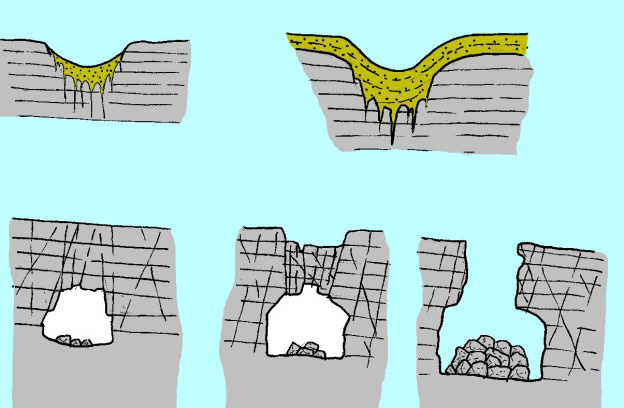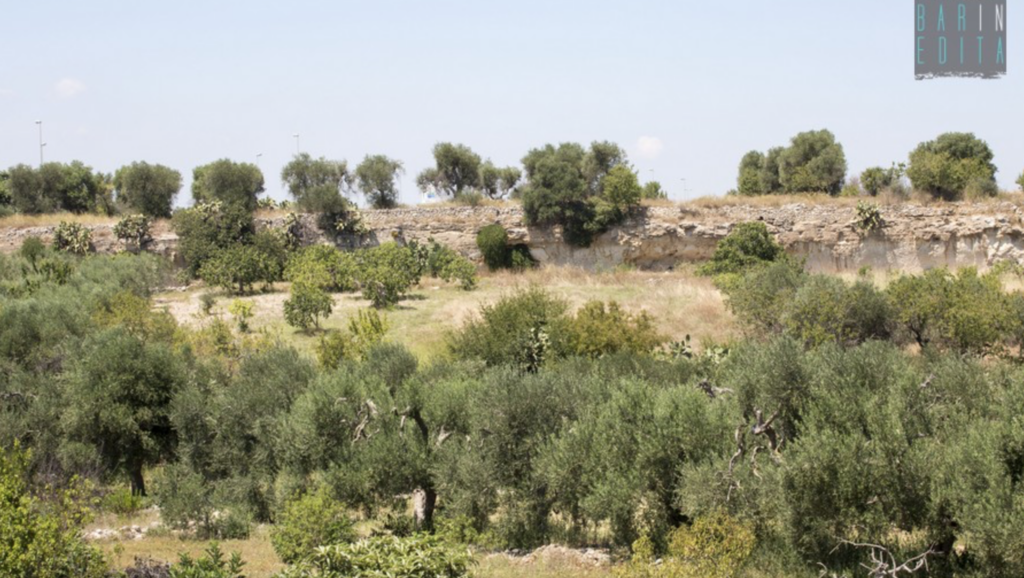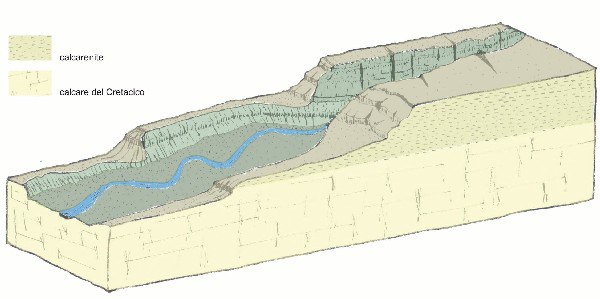
Puglia is an extremely karst region. From the North to the South of the region, interesting phenomena of rock excavation and compression of the ground can be observed. To map the different karst formations, let's start by clarifying the different types of landslides and depressions. The sinkholes, the "lama" and the ravines.
Dolina is a word of Slovenian origin and means “valley”. There are different types of sinkholes such as: bowl-shaped, plate-shaped, chalice-shaped or funnel-shaped. Based on the origin of their formation, they are divided into solution sinkholes or collapse sinkholes. Solution sinkholes are depressions in the ground of varying sizes, caused by the corrosive and erosive action of water, generally funnel-shaped, bowl-shaped or plate-shaped, also ending with a swallow hole, which can be blocked by debris or sand. The collapse sinkhole is generated by the collapse of the ceiling of an underground cavity, so the walls are sharper and more rugged, and there is an accumulation of boulders on the bottom. One of the most majestic sinkholes in Puglia is the Pulo di Altamura which was formed by the collapse of the roof of a large cavity.

Sinkholes
The term lama is a local Apulian toponym used to indicate an ancient watercourse. The lame are in fact furrows, wide but not very deep, once crossed by the waters of ancient streams. The presence of the lame mainly affects the eastern side of the Murge where the phenomenon designs a superficial hydrographic system that from the Murgian terrace flows towards the Adriatic. The waters that have dug the lame flow today underground and flow into karst springs near the sea or in the middle of marine springs. The presence of water in the lame, due to the high permeability of the soil, can only be found in the event of intense rainfall. The climatic conditions, the morphology, the presence of fertile land and karst caves along the tuffaceous sides of the lame, have made these places typical environments of the Apulian landscape and, since ancient times, privileged places for human settlement. This is evidenced by the numerous rock settlements such as that of Lama D’Antico, one of the largest in all of Puglia.

The gravine They are deep rock erosions formed by the corrosive action of old watercourses that flowed from the Murgia plateau towards the sea. Unlike the lame, they appear as narrow and deep rocky gorges, real canyons with a “V” profile. Inside them it is possible to find small streams, which can become abundant during heavy rainfall. The vertical walls of the ravines, with their cave systems, show traces of human presence from prehistory to the Middle Ages. Their difficulty of access in fact, has constituted a very efficient natural defense for the populations that have inhabited the numerous natural caves present in them, and has allowed over time the conservation of habitats extraordinarily rich in flora, fauna and microfauna. The greatest number of ravines in Puglia is concentrated along the arch of the Gulf of Taranto, with breathtaking scenery, made of deep crevasses, caves, steep walls. The importance of the landscape heritage and its geological, faunal and environmental values led to the establishment of the Parco Naturale Regionale della Terra delle Gravine.




















Leave a comment